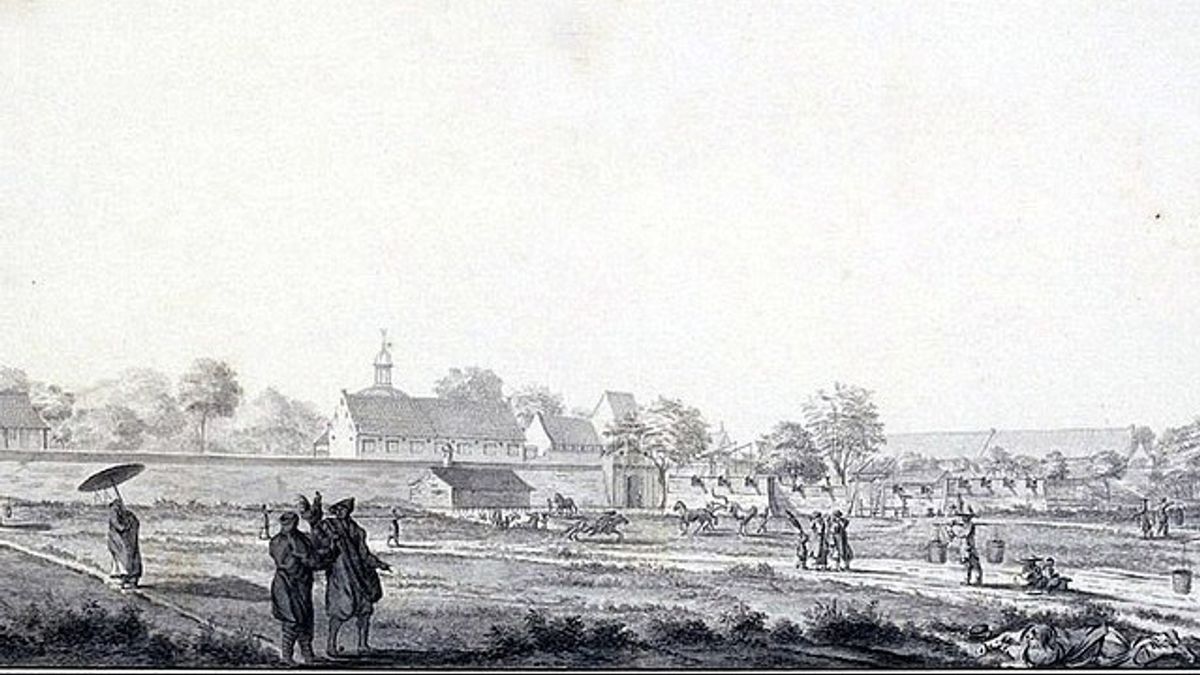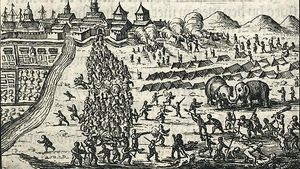JAKARTA History today, 240 years ago, August 4, 1783, the famous painter of Batavia, Johannes Rach died. He was buried in the Old Dutch Church (the location where the Wayang Museum is now occupied). Rach's departure brought deep sorrow to the whole of Batavia.
Previously, Rach was known as a painter and soldier of the Dutch trading airline, VOC. He has a hobby of capturing every corner of Batavia (now: Jakarta) in his painting. From the atmosphere of the city hall to the house of the Governor General of the VOC.
Living with artistic talent is a gift. Johannes Rach realized. He considered that talent as a ticket to success. He then began knitting his dream by moving from his hometown in Copenhagen, Denmark to the Netherlands.
Rach had a high dream. He wanted to become a famous painter in Haarlem, the Netherlands. However, the dream was not easy to realize. Rach was hit hard. As an outlet he tried his luck in other fields. Instead of exploring painting in the Netherlands, Rach chose to join the Company.
The decision made him succeed in becoming a ready-made Company employee. Initially, Rach was placed in Tanjung Harapan, Afirika. Then, fate brought him to serve with the Company in the archipelago.
Rach also likes his career at the Company. Moreover, the Company fully supports his talent in painting. People in Batavia were also amazed by his work. Rach was also flooded with painting orders. Moreover, he used to paint without sketches.
It was this painting hobby that brought Rach to be interested in capturing the whole of Batavia from 1762-1783. He captured many paintings ranging from the homes of the Governor-General of the VOC, city halls, churches, hospitals, to social life in Batavia.
Rach also describes daily life in Batavia, such as a Chinese church and temple. Islamic scholars are talking, Arab swords on the Ciliwung side, and Javanese farmers are bringing crops. All of them have 202 Rach paintings stored by the Indonesian Nasal Library, in collaboration with Rijkmuseum in the Netherlands, "said Alwi Shahab in the book Dutch Time Born Batavia (2013).
Rach's works are eternal. However, not with him. He died on August 4, 1783. He was also buried in the Old Dutch Church. However, because the Church was evicted, his grave was then moved to the Kebon Jahe Kober Cemetery in Tanah Abang (now: Taman Prasasti Museum).
His departure not only leaves a large wealth legacy for his wife and children in Amsterdam, but also for future generations. Rach's works can be transformed as a guide or picture for everyone to explore the past Batavia.
"Thanks to Johanes Rach's works and his assistants who described in detail all corners of Batavia in the 18th century, for example, we can imagine what the original form of buildings in the city area (Oud Batavia) is now."
"Some time ago, for example. While making a tunnel in front of the Beos Station (City Station), the builders found a fence underground," said Seno Joyo Suyono and Anton Septian in his writing in Tempo Magazine entitled Batavia Before Camera (2007).
VOIR éGALEMENT:
The English, Chinese, Japanese, Arabic, and French versions are automatically generated by the AI. So there may still be inaccuracies in translating, please always see Indonesian as our main language. (system supported by DigitalSiber.id)














